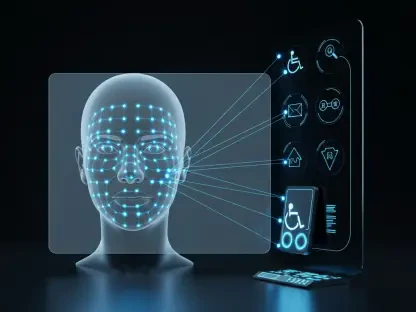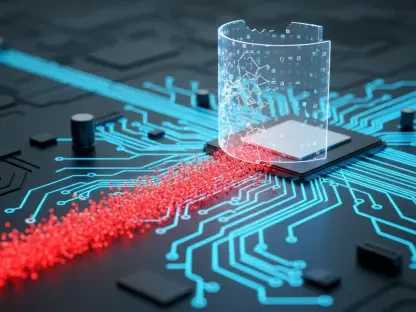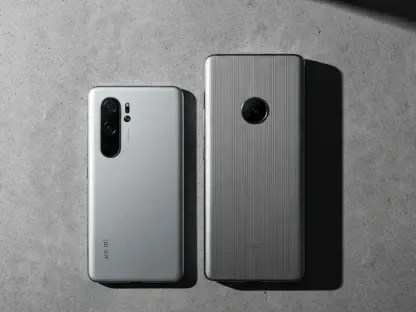The field of quantum technology is witnessing rapid advancements thanks to the collaborative efforts of institutions like Sandia National Laboratories and Arizona State University (ASU). These entities are spearheading the miniaturization of large optical systems into chip-sized integrated microsystems, a venture set to revolutionize quantum information technology, education, and workforce development. This collaboration signifies a landmark in the quest to make quantum systems more practical, efficient, and scalable, thus opening doors to groundbreaking applications in advanced computing and secure communications.
Collaborative Quantum Innovations
Sandia National Laboratories and ASU are joining forces to address the challenges in quantum technology. By leveraging their expertise, they aim to transform cumbersome optical systems into compact, integrated microsystems. Leading this effort is physicist Nils Otterstrom from Sandia, who specializes in integrated photonics. Otterstrom’s work focuses on enhancing the performance and scalability of these systems, which promises significant breakthroughs for advanced computing and secure communications.
Integrated photonics entails the development of novel devices and exploring new device physics. This approach aims to incorporate all necessary functionalities for fundamental research and the creation of next-generation quantum microsystems. With its unique fabrication capabilities and the highly customizable Microsystem Engineering, Sciences, and Applications (MESA) complex, Sandia stands at the forefront of this technological evolution. The potential applications are vast, ranging from quantum computing and secure communications to high-precision sensors. By developing integrated microsystems, the partnership seeks to replace bulky traditional hardware, making quantum technology more accessible and versatile.
The Quantum Networking Shift
Another crucial element of this collaboration is the involvement of Joe Lukens, Senior Director of Quantum Networking at ASU. Lukens is an expert in using light frequencies to carry quantum information for quantum computing and networking systems. Through a Cooperative Research and Development Agreement funded by the Quantum Collaborative, Lukens and Sandia have formalized a partnership to push the boundaries of quantum technology. This alliance is pivotal in enhancing the robustness and scalability of quantum information systems, which are critical for the future of secure communications and advanced computational models.
Lukens underscores the significance of collaborative efforts in advancing this field. The Quantum Collaborative, funded by the state of Arizona and managed by ASU, aims to unite various academic and research institutions, including national labs, to further quantum information and technology research. This joint effort is essential for heralding the age of quantum advancements. By pooling resources and expertise, this partnership aims to create a more cohesive research ecosystem, thereby accelerating the development and deployment of quantum technologies.
Transitioning From Bulky Systems to Integrated Chips
Before partnering with Sandia, Lukens worked extensively with fiber-optic systems for frequency-bin quantum information processing. In this technique, qubits are photons that simultaneously possess two different wavelengths or colors of light. This approach is advantageous for quantum communications due to its efficient transmission in optical fiber. However, traditional methods involved large, bulky systems that resulted in high photon losses and required expensive components and substantial space. These limitations have long been a bottleneck for the practical deployment of quantum networking systems.
Sandia’s capabilities prove transformative in this regard. The institution can fabricate small photonic integrated circuits that replicate the functionalities of a large optical table, benefiting from the flexibility of the MESA complex. Sandia’s National Security Photonics Center boasts diverse component and platform technologies with over 50 issued patents in integrated photonics. These innovations allow for the miniaturization of complex optical systems, making them more scalable and cost-effective. This leap in technology could be the key to unlocking the full potential of quantum information processing and communications.
Advancements in Quantum Photonics
Among the notable advancements is the development of efficient novel phase modulator devices by Sandia, in collaboration with Professor Peter Rakich’s team at Yale University. These devices leverage suspended silicon waveguides that carry light and gigahertz soundwaves generated by co-integrated aluminum nitride electro-mechanical transducers. The resultant structures can split photons into multiple frequencies, facilitating enhanced quantum information processing within higher-dimensional spaces. This innovation is particularly significant as it provides a more efficient method for manipulating quantum information, potentially reducing the errors and losses typically associated with quantum systems.
These innovative devices enable quantum information to be carried by the light’s color, providing a more flexible and efficient method for processing quantum information. This development holds particular significance for quantum photonics, where spatial beam splitters are fundamental components. By enabling multiple frequencies to be processed simultaneously, these devices pave the way for more complex and capable quantum systems. These advancements could revolutionize fields such as quantum computing, secure communications, and precision metrology, making quantum technology more practical and impactful.
Future Prospects and Applications
Lukens outlines the objective to transition from proof-of-principle experiments to practical deployments in quantum networks. Achieving this necessitates systems with lower losses and reduced costs compared to current commercial devices. Integrating these capabilities onto a chip could make quantum networking more practical and feasible. This would mark a significant milestone in the journey towards widespread adoption of quantum technologies, potentially transforming various industries that rely on secure and efficient data transmission.
Otterstrom has been instrumental in assisting Lukens by providing essential components, such as microscopes and optical mounts, to use Sandia-built photonic integrated circuits in a testbed at ASU’s lab. Recently, Sandia’s Laboratory Directed Research program awarded $17 million to their work in frequency-based quantum photonics, reinforcing their research through a Grand Challenge program known as Error-Corrected Photonic Integrated Qubits (EPIQ). This funding aims to support the development of error-corrected photonic qubits, which are crucial for building robust and reliable quantum systems.
A Milestone in Quantum Collaboration
Paul Davids, the project’s principal investigator, acknowledges the importance of the partnership between Sandia and ASU in securing the EPIQ Grand Challenge funding. The collaboration between Otterstrom and Lukens laid crucial groundwork for this extensive initiative. This recognition will enable the team to scale up the implementation and integration of device physics explored during their initial collaboration, aiming to develop a practical, error-corrected photonic qubit. This collaboration serves as a model for how interdisciplinary and cross-institutional efforts can drive significant advancements in technology.
The funding will enable the team to scale up the implementation and integration of device physics explored in their initial collaboration, aiming to create a useful photonic qubit that can be error-corrected. This represents a significant milestone in the development of quantum technology. The progress achieved through this partnership underscores the vital role of collaborative research in overcoming the complexities associated with developing next-generation quantum systems.
Supporting Quantum Tech Development
Beyond their involvement in the Quantum Collaborative, Sandia supports microelectronics prototyping through the MESA complex. As a core partner of the Southwest Advanced Prototyping Hub (SWAP Hub), led by ASU, Sandia contributes to one of the eight Microelectronics Commons Hubs across the United States. Funded by the CHIPS and Science Act, this initiative aims to bolster American competitiveness in the semiconductor industry and reduce reliance on foreign suppliers.
This strategic initiative aligns with the broader goals of enhancing domestic capabilities and fostering innovation in various technological domains. The MESA complex’s advanced facilities allow for rapid prototyping and testing, accelerating the pace of development and commercialization for new technologies. By contributing to the SWAP Hub, Sandia and ASU are helping to create a more resilient and self-sufficient semiconductor ecosystem in the United States.
Summary and Conclusion
Quantum technology is rapidly evolving, thanks in large part to innovative collaborations between institutions such as Sandia National Laboratories and Arizona State University (ASU). These organizations are at the forefront of transforming bulky optical systems into compact, chip-sized integrated microsystems. This significant endeavor aims to revolutionize the realm of quantum information technology by making these systems more practical, efficient, and scalable. Consequently, this technology is poised to bring about game-changing applications in advanced computing and secure communications.
As quantum systems become more streamlined and accessible, they promise to impact numerous fields, from improving data encryption methods to enhancing computational speeds in ways previously thought impossible. These advancements not only hold the potential to push the boundaries of existing technology but also pave the way for new educational opportunities and workforce development in the quantum sector. Students and professionals will be able to engage with cutting-edge technology, gaining the skills needed for the jobs of tomorrow.
In summary, the collaborative efforts of Sandia National Laboratories and ASU represent a milestone in quantum technology. Their work in miniaturizing optical systems is a critical step toward making quantum systems a practical reality, thus fostering innovation, education, and future job growth in this cutting-edge field.









